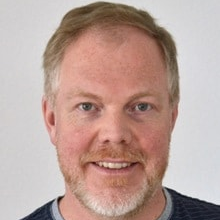Computational Methods for Neutron Imaging
A special issue of Journal of Imaging (ISSN 2313-433X). This special issue belongs to the section "Computational Imaging and Computational Photography".
Deadline for manuscript submissions: closed (30 November 2022) | Viewed by 9997
Special Issue Editors
Interests: neutron imaging; image processing; scientific computing
Special Issue Information
Dear Colleagues,
Neutron imaging is a technique that has undergone immense development over the past few decades and is still developing rapidly. Its development has resulted in many new additions to the fundamental experimental configuration. The qualitative data interpretation of direct, real-space neutron imaging data is intuitive and straightforward. Thus, qualitative observations have already contributed to a wide range of fields, especially in the early days of neutron imaging. More recently, however, quantitative assessments of various aspects of the studied objects using neutron imaging and tomography are becoming more prevalent. Furthermore, the importance of quantitative analysis has increased with the availability of techniques for measuring reciprocal-space signals with real-space resolution, including, for example, Bragg edge imaging and dark-field imaging in neutron grating interferometry. Obtaining quantitative information from image data requires reproducible data-analysis workflows that efficiently allow for repetitive testing and production runs on large amounts of data. Some of these workflows are fundamental for all experiments, while others target specific tasks for applications such as materials science, electrochemistry, geology, life sciences, nuclear engineering, and many more. This multitude of applications also resulted in many new analysis solutions, often inspired by image processing techniques for medical diagnostics, astronomy, and microscopy, as well as computer vision and machine learning techniques. In addition, modeling and simulation begin to find usage in advanced neutron imaging data analysis; examples include providing synthetic data for training, testing, and validating algorithms such as tomography reconstruction, filtering, segmentation, and machine learning.
This Special Issue on “Computational Methods for Neutron Imaging” will focus on different aspects of the development and use of algorithms, workflows, and software engineering solutions to provide analysis tools for neutron imaging. Papers must be original research of novel results or a relevant review article of the current state of the art, and they should include a brief description of the necessary mathematical foundation for the presented computational methods (unless it is well known in the field of neutron imaging and neutron tomography), computational workflow (flow charts or workflow diagrams are welcome), and details on implementation, such as the main computing languages and software packages used, and computing resources needed. If the computing tool developed is available on public repositories such as github, please also share the repository URL.
Dr. Anders Kaestner
Dr. Jiao Lin
Guest Editors
Manuscript Submission Information
Manuscripts should be submitted online at www.mdpi.com by registering and logging in to this website. Once you are registered, click here to go to the submission form. Manuscripts can be submitted until the deadline. All submissions that pass pre-check are peer-reviewed. Accepted papers will be published continuously in the journal (as soon as accepted) and will be listed together on the special issue website. Research articles, review articles as well as short communications are invited. For planned papers, a title and short abstract (about 100 words) can be sent to the Editorial Office for announcement on this website.
Submitted manuscripts should not have been published previously, nor be under consideration for publication elsewhere (except conference proceedings papers). All manuscripts are thoroughly refereed through a single-blind peer-review process. A guide for authors and other relevant information for submission of manuscripts is available on the Instructions for Authors page. Journal of Imaging is an international peer-reviewed open access monthly journal published by MDPI.
Please visit the Instructions for Authors page before submitting a manuscript. The Article Processing Charge (APC) for publication in this open access journal is 1800 CHF (Swiss Francs). Submitted papers should be well formatted and use good English. Authors may use MDPI's English editing service prior to publication or during author revisions.
Keywords
- neutron imaging
- image processing
- computed tomography
- neutron grating interferometry
- neutron Bragg-edge imaging
- modeling and simulation
- scientific computing







